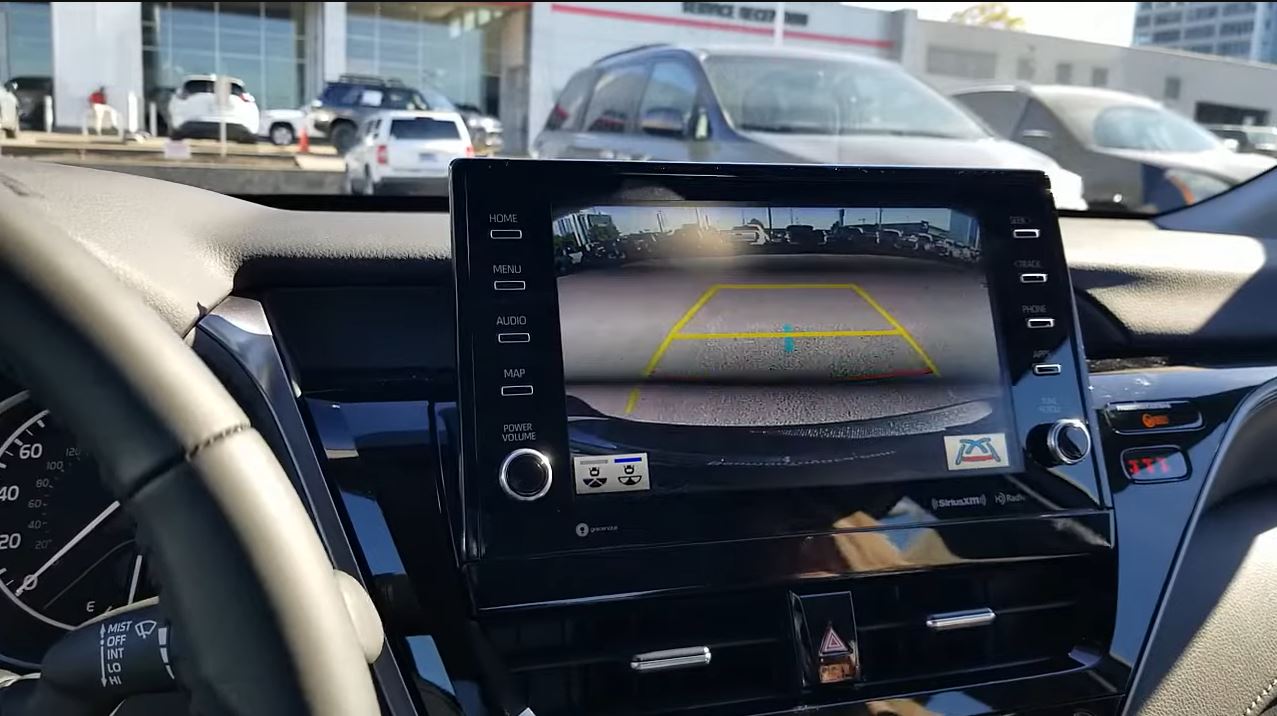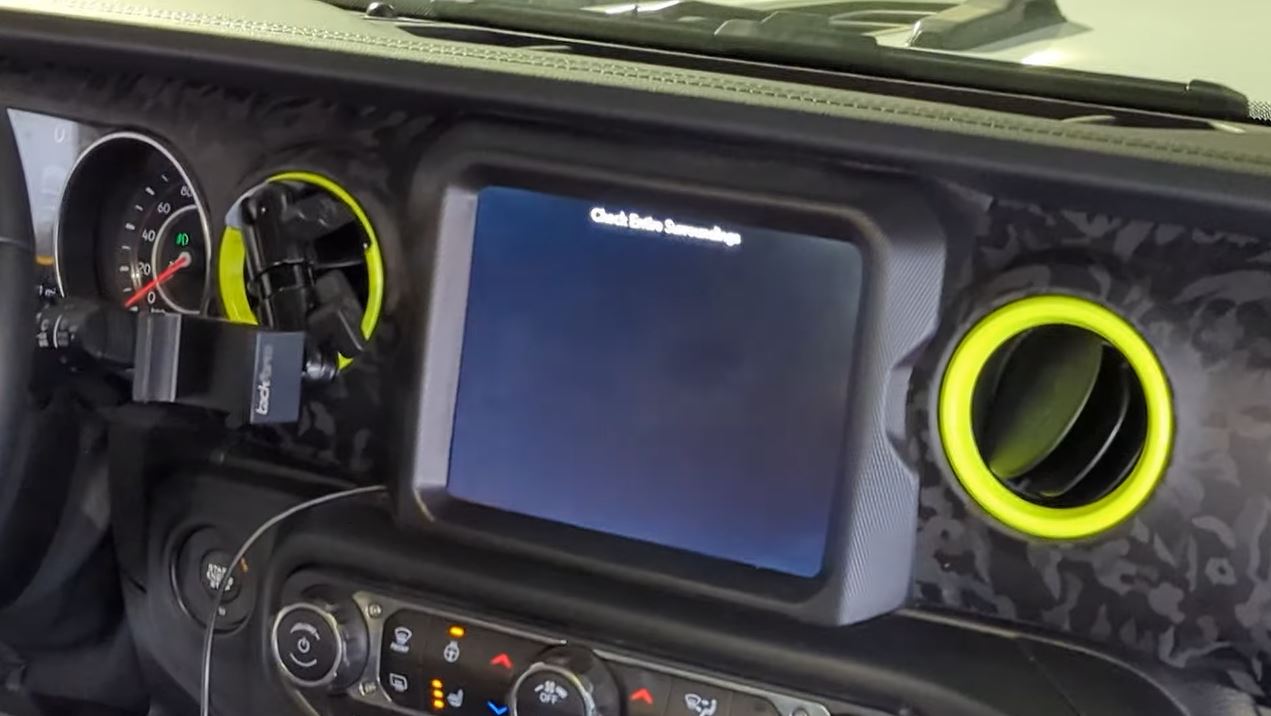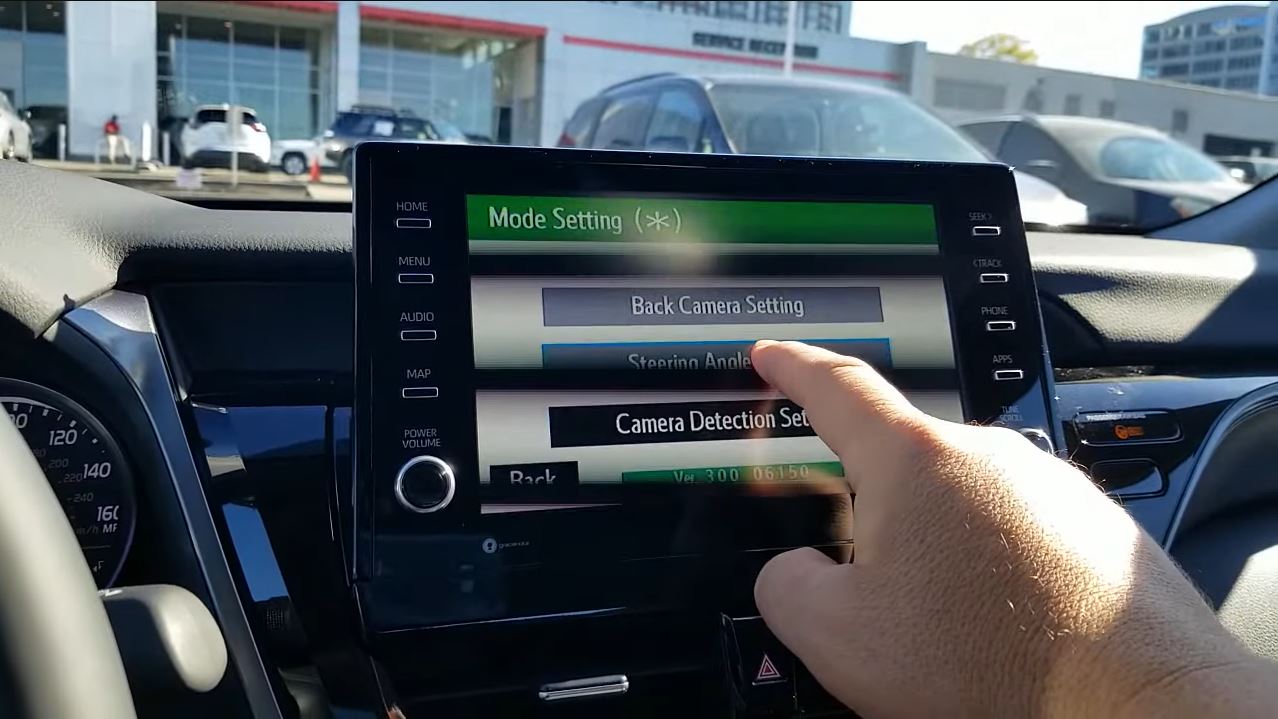
The backup camera of vehicles is one of the coolest features ever, in my opinion. Not only does it help you park like a pro, but it also prevents accidental crushing with vehicles parked behind yours.
However, using such backup cameras for my Toyota, I also found that these cameras can run into problems at any time. Things like blank screens, blurry cameras, no gridline, etc., are some of the common ones. So why not just discuss the common Toyota backup camera problems and learn how to fix them?
Toyota Backup Camera Problems: Quick Solutions
Don’t have much time in hand? No worries! Here is a quick solution table where I have listed the problems you can face with your backup camera, what causes them, and how you can solve the problems. Still, make sure to check out the full article later.
|
Problem |
Causes |
Solutions |
|
No Grid Lines |
Faulty setup, steering wheel not adjusted |
Setup needs to be adjusted |
|
Grid Line Off-Center |
The camera is not aligned properly |
Reinstall the camera or fix the alignment |
|
Camera Not Engaging/Turning On |
Blown fuse, wiring issue |
Fix the wiring or replace the blown fuse |
|
Blurry Vision |
Dirt over camera lens, fog or internal condensation, connection problems, exterior damage, etc. |
Clean the camera, regulate water flow to avoid condensation, fix any faulty connection, or get it checked by a professional. |
|
Blue Screen |
Loose or faulty wire connection, broken harness, damaged camera |
Fix the connection, replace the damaged wire, reset the camera setting, or contact the dealer |
|
Camera Does Not Work When It Rains |
Faulty wiring at the tailgate, corrosion issue |
Connect the wires properly, and take it to a professional for corrosion issues. |
Toyota Backup Camera Problems: A Detailed Explanation
The table above gives you an estimated idea of what can cause the backup camera to act up. If you have enough time in hand, I urge you to read the detailed explanations below.
1. No Grid Lines
The grid lines you see when the camera gets activated are what you need to guide your vehicle as you put it in reverse. But once in a while, you may find that the yellow grid line has disappeared completely while the red or green lines are still there. But without the yellow grid lines, the backup camera will fail to serve its purpose.
A faulty system setup is the most common cause behind this problem. That is why you will notice an exclamation mark inside a square on top of the screen. It can also happen if the wheels are not properly aligned when you remove the gear.
Solutions:
Keep your wheels steady first. Then turn the steering wheel to the left and then to the right. The yellow grid line should appear instantly. But if that doesn’t work, try the following, which is more effective.
- Put your vehicle in the park and turn off the audio.
- Press and hold the Audio button and turn the headlight on and off at least 3 times. It will help you get the Service Mode/Menu.
- Select Function Check/Settings, choose Camera Settings, and then select Steering Angle Setting. Try touching and holding the option for a few seconds to enter the menu and then select Next.
- Put the steering wheel at the center and select Steering Center Memorize.
- After that, turn your steering wheel all the way to the left. Then select Max Steering Angle Memorize.
- Turn the wheel again all the way to the right and again select Max Steering Angle Memorize.
- Once you hear the beep, press Back.
- Turn the car off and then on again.
- And once the vehicle turns on, put your vehicle on reserve and you will notice that the yellow grid lines are back.

2. Grid Lines Off-Center
The grid lines that you see through your backup camera are aligned with your back wheels. But once I noticed that one of my Toyotas did not have the grid lines aligned. Instead, one of the lines is way over the vehicle’s visible back part while the other one is way off it. So even though they were aligned with my vehicle wheels, they were not right.
Solutions:
Since it was a first, I didn’t know what to do. So I got it checked by a professional. What I learned was that the camera was not positioned or aligned properly during installation. As a result, the grid lines showed off-center.
I had to get the camera reinstalled properly and the problem was fixed. So if you are also having the same issue, my suggestion would be to get the camera checked by a professional or make sure it was positioned properly.
3. Camera Not Engaging/Turning On
The backup camera on your Toyota helps the driver to drive backward and park the vehicle easily. So the camera turns on as soon as you put the vehicle in reverse.
But if it doesn’t turn on instantly or do anything, it can be a problem. It also means the camera is not engaging for some reason.
Now I must tell you that it’s not really a good sign. Usually, when the camera does not engage, it means you have a wiring problem or there is a blown fuse.
Solutions:
The backup camera should turn on as soon as you set the gear off or put the vehicle in reverse. But if it doesn’t, I say it can be a wiring issue, which means the wire setting might not be right or it could have worn out or got damaged over time.
If that is the case, you will have to hire someone professional to replace the wiring. Also, the fuse should be tested to check if it is blown. And if that’s what happened, you need to get the fuse replaced.
4. Blue Screen

Having a blue screen is not as common as having no grid line as your backup camera gets turned on. In some cases, you will notice that the screen has gone entirely blue. On another occasion, you may notice that all you see is the grid lines in the blue screen. Either way, it could be because there is a faulty wire connection, a broken harness or the camera itself could be damaged.
Solutions:
As I mentioned several times already, checking on the wire connection is very important in case there is a loose or damaged wire. But whenever I came across a blue screen due to a backup camera issue, wiring or the broken harness was a common cause.
So if that’s the case, you need to get the wires repaired by a professional. And if the camera hasn’t been maintained for a while, chances are the camera has gone bad and needs replacement.
In some cases, this problem gets fixed on its own after a few days. If it doesn’t, you need to take the camera to the dealer. But before you do that, I suggest you try resetting it in the following way.
- Press the System Settings icon on the navigation panel.
- Then press the Settings option that appears on the menu bar after that.
- Scroll down and find Reset to Factory Settings.
- Once it shows the Factory Reset choice, click RESET and wait for the system to reset.
If you are still facing the issue, you need to contact the dealer to troubleshoot the problem.
5. Blurry Vision
The backup camera usually comes with a plastic lens which becomes blurry over time. But if the vision becomes blurry, you will have a hard time putting the vehicle in reverse. Not to mention the damage it can do over time if the matter is left unattended. However, there are a number of reasons that need to be addressed if your backup camera seems blurry.
The most common reason why it happens is because the lens gathers dirt, dust, and other particles over time. Besides, lenses often tend to fog up due to the surroundings. On top of that, if there is a condensation problem, the camera will become blurry. Hardware damage, loose or faulty connections, etc. are also responsible for the camera appearing blurry.
Solutions:
Since a dirty camera lens is often the main culprit here, you should start by cleaning the lens. I usually use lens cleaning paste because it is safer than using anything else and also cleans the lens better. Even if it fixes the issue, you should watch out for condensation problems because if water gets inside the electronic part of the camera or vehicle, it will cause further damage.
The Toyota backup camera comes with various wiring connections. It also has an adapter that connects it to the display. And if any of these wires come loose, the camera will not function properly.
This can also result in blurry vision. To resolve this issue, you need to inspect the wiring connections. Make sure to check on them regularly to see if they have worn out or got damaged.
However, if you notice visible damage in the camera, you need to get it checked by a professional. But if none of these work, the camera itself could be faulty and will need replacement.
6. Camera Does Not Work When It Rains
The way a backup camera is manufactured, it is meant to work no matter what the weather condition is. Yet sometimes, users say that their backup camera malfunctions when it rains. Well, maybe rain has nothing to do with it unless water got inside the camera.
Your backup camera probably has loose wiring at the tailgate or there must be a corrosion problem. Either way, the camera does not seem to work properly when the weather gets harsh.
Solutions:
I always advise to clean the camera or the plug under the tailgate. If there is anything stuck there causing the camera to malfunction, cleaning it up often fixes the issue. But if it doesn’t, try checking the wire or connection to see if anything has come loose.
Worn-out or damaged wire often causes the camera to stop working. In that case, you just have to replace the wire. But if corrosion is the main culprit here, things will get worse over time as corrosion tends to spread from one part to another. So my suggestion would be to get the issue checked by a professional.
How To Maintain Toyota Backup Cameras

Since you rely on your backup camera for various purposes, having a malfunctioned or blurry camera is the last thing you need on a busy day. So the best way to avoid such a problem is to make sure the camera is properly maintained. And here is how you can ensure that.
Be Familiar With Troubleshooting
As you can see, most of the rearview camera problems can be solved without requiring any professional help. That is why knowing how to recognize the signs and fix the issues comes in handy and is cost-saving.
Clean The Lens Regularly
The backup camera is installed at the rear exterior of the car. So it is natural for the camera to gather dirt and dust on a regular basis. As you have read already, this can cause various issues. And one of them includes blurry vision.
On top of that, leaving the camera unclean longer can cause other internal issues. That is why it is necessary to clean the camera lens using a lens cleaner from time to time.
Protect The Camera From Damage
The backup camera is prone to physical damage as it is a small and lightweight device. So try to avoid impacts and keep the vehicle covered when not in use.
Check The Wiring
Loose, worn out, and damaged wiring causes the backup camera to malfunction. In fact, it is one of the common reasons why the backup camera acts up frequently and for a long time. So make sure to check on the wiring regularly. Tighten them if they seem loose and if you notice signs of damage or wear, it is best to replace the wires before they get worse.
Keep The Software Updated
Keeping the software up helps remove bugs and other issues related to camera malfunction. So make sure to keep the software updated.
Don’t Ignore The Signs
While it is entirely impossible to avoid backup camera issues forever. However, you can try dodging many of them if you watch out for the signs that I mentioned in the troubleshooting part.
Frequently Asked Questions
How do I turn on my Toyota backup camera?
Since the backup camera is connected to the vehicle’s reverse system, all you have to do is put the vehicle in reverse. This will turn on the backup camera.
How do I turn off the backup camera?
As soon as you put your vehicle off the gear, the camera will switch off on its own. That means, the camera will get switched off when you put the gear on drive or park.
Can I record videos with my Toyota backup camera?
Unfortunately, it’s not possible to record video with your backup camera. It only provides you with a view as you put your vehicle in reverse to help you see where the vehicle is going. Some of the new model has the option to record footage.
How long does a backup camera last?
Backup cameras can last as much as 5 to 10 years. It all depends on the camera quality, installation system, road or weather conditions that the vehicle or camera goes through, proper maintenance, etc.
How to Replace Rear Camera for Toyota
Final Words
It is natural for the Toyota backup camera to go through certain issues once in a while. But the ones I mentioned are the most common Toyota backup camera problems. Now that you know how to fix them or what steps to take, you can fix these issues effortlessly before things get worse.
Besides, knowing these troubleshooting tips will help you keep the camera running for a long time. However, if you fail to determine the issue, it is best to call an expert or take the camera to the dealer for further assistance.
Leave a Reply